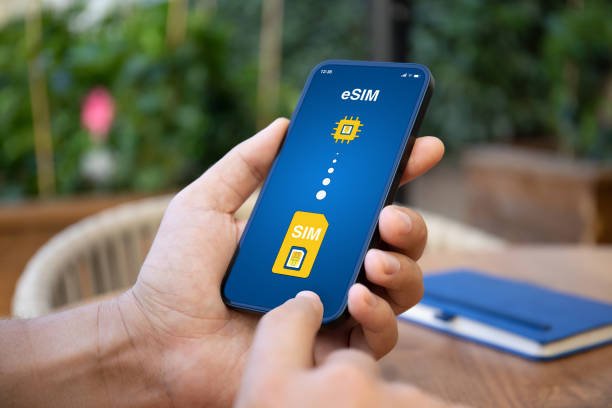If you’ve ever bought a new phone or changed carriers, you’re probably already familiar with the concept of a subscriber identity module (SIM) card. It’s a tiny chip that connects your phone to your wireless provider. For years, if you wanted to change carriers, you had to swap out your physical SIM card by popping the SIM card tray out of your phone and swapping one card for another. But an eSIM is different. Instead of a removable card, an eSIM is built directly into your phone’s circuitry (that’s the “e” in eSIM). With an eSIM, you don’t need to swap out your physical SIM card to switch providers. Instead, you can program the information remotely using the software. Switching providers is done with a tap and a swipe, without touching your phone’s hardware.
How eSIMs Work
The biggest advantage of an eSIM is that it allows you to connect multiple lines (even with different providers) to your phone. This is ideal for international travellers as you can easily add a roaming or global eSIM provider to your phone without having to queue at your destination to buy a physical SIM card. Travel eSIMs usually give you the option to choose how long you want to use that service for.
eSIMs also make it easier to switch from one mobile service to another as you don’t need to go to a brick-and-mortar store to swap out your SIM card. Often your provider will send you a QR code that you can scan and use to add the eSIM to your phone.
For example, if you want to separate your work and home life, you can reach both numbers on the same phone without having to carry a separate handset.
In general, eSIMs are more secure. While physical SIM cards can be lost or damaged, eSIMs are permanently attached to your phone. Devices with eSIMs are easier to track if stolen, as the SIM cannot be easily removed. eSIMs also reduce the risk of SIM cards being cloned or stolen.
What are the disadvantages of using an eSIM?
On the other hand, if you want to use a single line for multiple devices, eSIMs can be a real pain. While it only takes a few seconds to slide a physical card into and out of another phone, with an eSIM you have to deactivate and reactivate the card every time you change phones.
Upgrading your phone is also much easier with a physical SIM card. Just transfer the card from your old phone to your new one and you’re done. Plus, if your eSIM device gets damaged, you can’t easily replace the SIM card like you can with a physical option. With an eSIM, you’ll have to go through a lengthy deactivation and reactivation process.
Is it better to use an eSIM or a physical SIM card?
This depends entirely on your needs and priorities. If you’re happy with one phone, eSIM is obviously more convenient because it gives you the freedom to use multiple carriers and is more secure. But if you value the flexibility of being able to use the same SIM across different devices, a physical SIM might be to your liking.
Do all phones support eSIM?
No. But most modern Android smartphones, including Samsung, Motorola, and OnePlus, do. If you bought your phone in the last three years, it’s likely to support eSIM. All iPhones from iPhone XS and XR onwards support eSIM. In the US, iPhone 14 and later only support eSIM and do not support physical SIM cards.
Google’s Pixel 6 and later models support eSIM, as do all Samsung phones from the Galaxy S21 onwards (including the Z Fold and Flip series).
Why are eSIMS so popular?
As mentioned above, eSIMs allow you to have multiple network connections on one phone, which is useful for people who travel around the world, want to switch cell phone providers, or have separate lines for work and phone calls. They are also more secure than physical SIM cards because they are less likely to be lost or damaged.
There are other reasons why eSIMs are popular: eSIMs take up much less space, theoretically allowing for slimmer hardware and larger batteries. Apple has removed the physical SIM card tray from US models since the iPhone 14, but it remains to be seen how this will affect the design of new iPhones. eSIMs are also generally more power efficient than physical SIMs, which may result in less battery drain.
From a business perspective, eSIMs enable corporate device administrators to change or upgrade cellular service on employee mobile phones at scale, whether they have 10 employees or 10,000.


